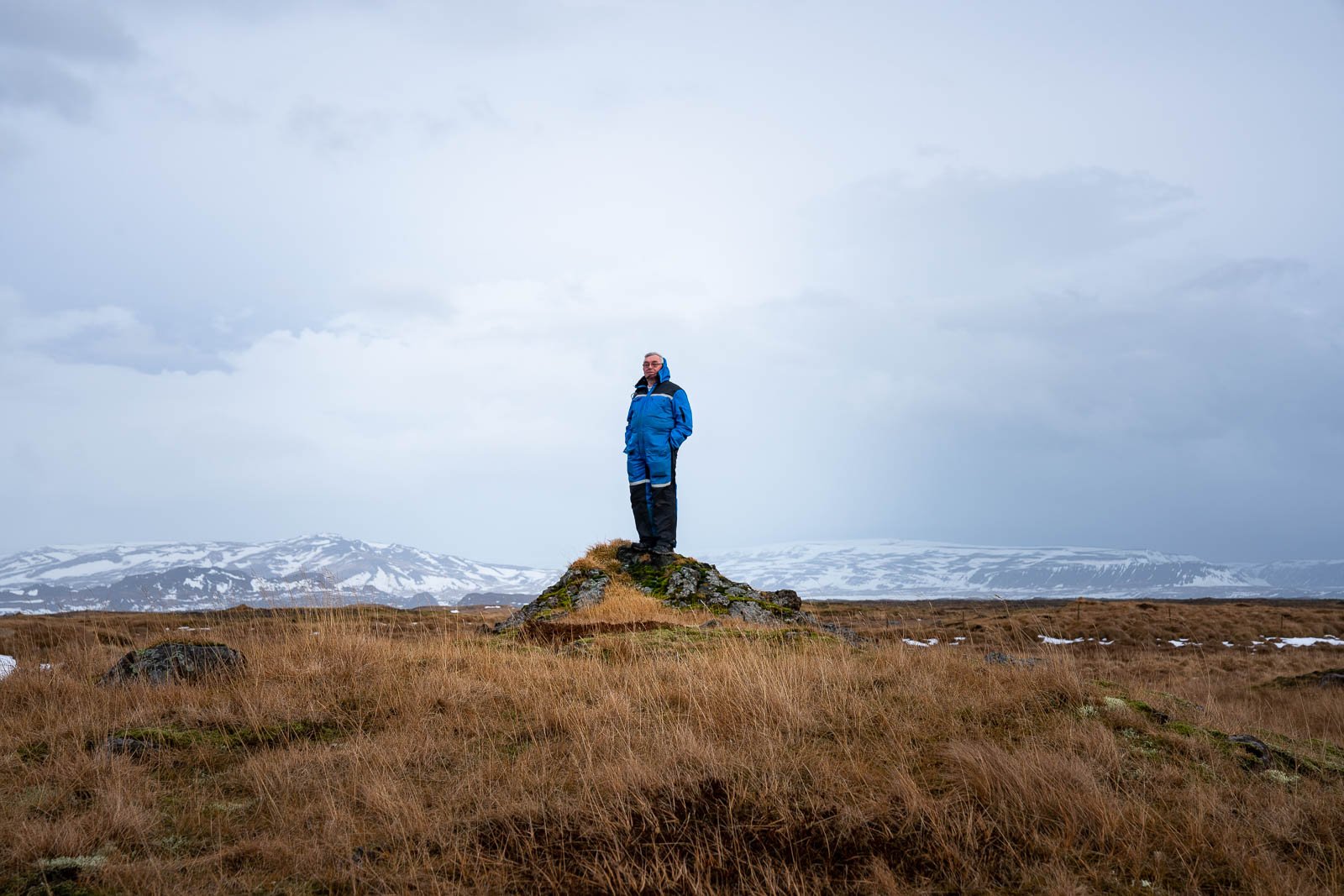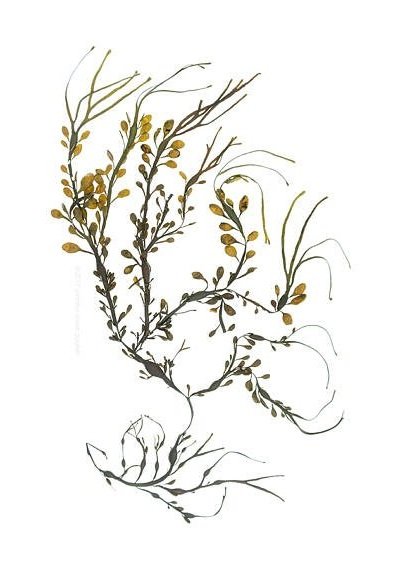Seaweed fertilizer makerDalli has been making fertilizer from hand-harvested seaweed for the past 30 years. He tells us about how he created fertilizer, countryside life in the old days, and the hobbits in the human psyche.
Guðjón Dalkvist Gunnarsson “Dalli”
“Let’s say, you were baking, and someone tried to put hundreds of grams of salt instead of sugar—you would correct that, and get a good cake.”
Dalli explains how he created Glæðir, a liquid fertilizer made from seaweed. In the late 80s, he came upon a recipe developed by a research institution. “I just saw what mistakes they had made, it was possible to do this in a much simpler way.” Downplaying his alchemy in a playful remark.
Every autumn, 1000 litres of this liquid nourishment is cooked up in a one-man operation workshop next to his home. “It’s a good hobby for old people.” He laughs. Since the 80s, Dalli has been brewing his seaweed fertilizer. Glæðir was a familiar name to growers, from house plant owners to tomato farmers and landscape architects.
Can you say in one sentence what Glæðir is?
Glæðir is a seaweed liquid... do you want a longer sentence?
Yes...
Glæðir is a seaweed liquid concentrate, almost viscous, but by mixing it with water, 1:50, then this is suitable for all plants, from the largest trees down to aquarium plants and plants of all sizes between this range. It mainly has trace element, but I put soda to dissolve the substances. This soda has a significant amount of potassium, which acts as a potassium fertilizer. In the old days, potassium was called potash and it was made from seaweed. Seaweed was burned to obtain potash, so it could be said that this soda is also made of seaweed...
“... there is no magic to this, and this is extremely simple.”
Can you tell us how it is made?
The first thing I do, I drive out to a place down at the shore, harvest the seaweed, put it into a net bag. When it reaches a certain amount, say 20 kg, something close to it, I then put it in a big, old cooking pot, 115-liter pot, with lots of water and potassium soda, boil it for three or four hours, filter, and then the fertilizer is ready. I fill a few thousand liters into 1 and 5-litter plastic bottles when I produce.
I always produce in Fall because then the seaweed is clean. In the other parts of the year, some other vegetation grows on the seaweed. It is very slippery, frjó [the pollen/seed] we call it, it looks like gróblöðrur [blisters], or what to call it. But in the autumn the seaweed is completely clean. Sales are by far the highest in the Spring and Summer. Yesterday, one gets, you can actually say, the first order of the year, the first real order...
In itself there is no, there is no magic to this, and this is extremely simple. Initially, one asks a lot of “why?”— Then do a few tests for the amount of water against this amount of seaweed and this much soda, and this just works well, there are many very impressed.”
(He answers all in one breath.)
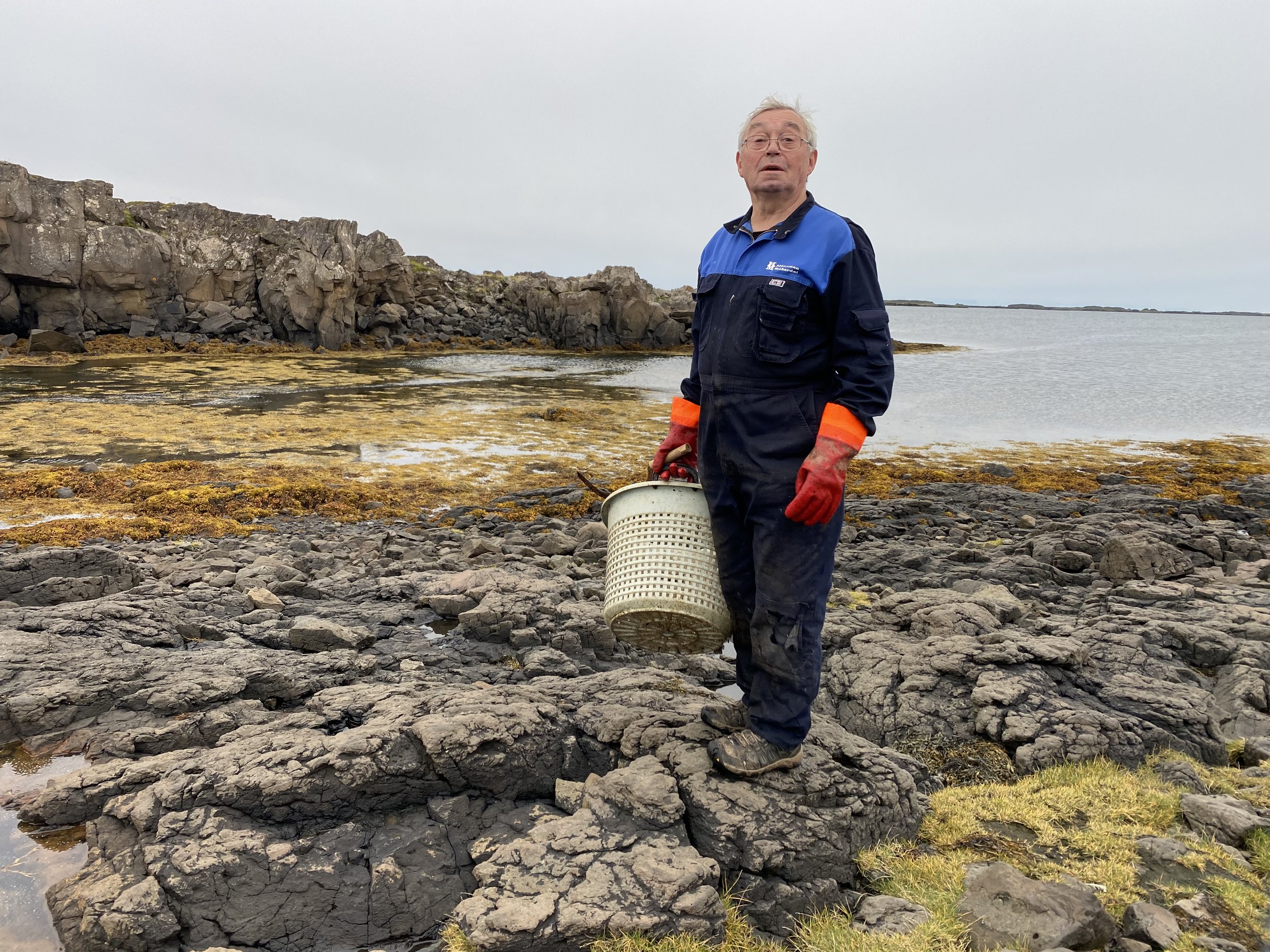
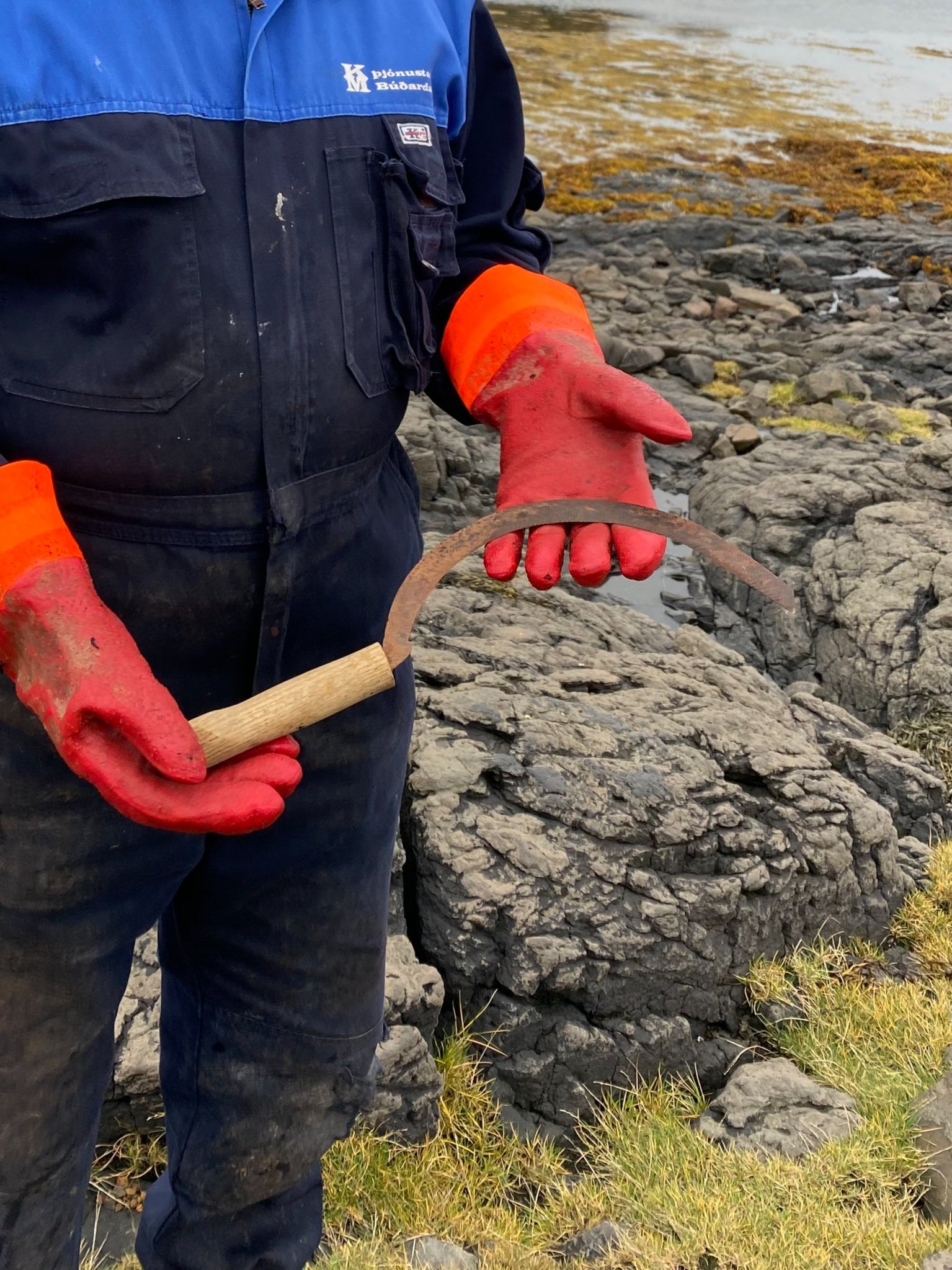
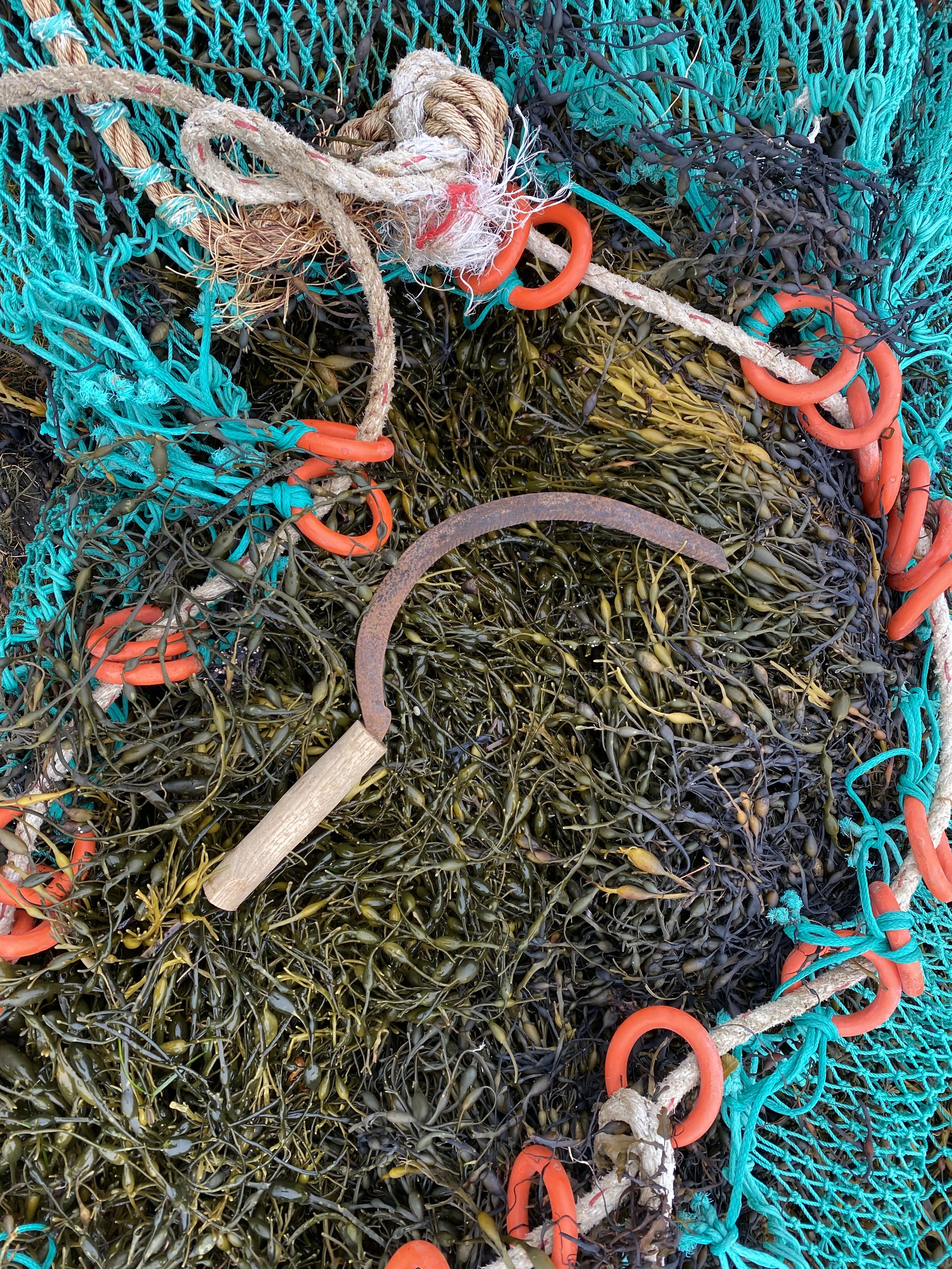
Could you tell us about yourself? What is your name?
My name is Guðjón Dalkvist Gunnarsson, born and raised here in Gilsfjörður, Gilsfjarðarmúli. My father was a farmer and laborer and I grew up farming and then became a farmer, first in Króksfjarðarnes and then Svarthóll and most of the farming years in Mýrartunga. Then I went to work in the algae factory and was there for 20 years. Since then I have just done something else and what that has occurred... got married and had four kids, then divorced the woman and she died later and the kids are fine [laughs] ... Anything else you want to know?
A drawing of Guðjón Dalkvist Gunnarsson by Ómar Smári Kristinsson, as part of the 101 andlitsteikning á léttu nótunum series
Dalli, now 77, was born in the Reykhólarhreppur municipality and has spent his whole life living in this southeastern region of The Westfjords. He remembers a time when half the village was turf houses, inhabitants did not travel from town to town, and the normal time to reach Reykjavík was 9 hours. Many parts of the main road in The Westfjords was paved by dirt and gravel edging around the coasts of the fjords. The bus would take one hour to travel 23 kilometres between bus stops that stood on the opposite sides of a fjord. “It was when things went well.” He added, laughing.
Dalli now lives in Reykhólar. “Reyk- means smoke -hólar means a hollow”. Dalli explains the name of the village, as he casually strolls the meandering path through a marshland full of steamy puddles, yellow hay and lichen-crusted boulders, with both hands in his one-piece work suit pockets. His agility and enthusiasm remind me of a young eagle scout. It is evident that he is a nature lover, as he describes himself. Now retired, he spends time laying nature paths, taking pictures of the countryside, playing chess and tiling driveways, among various random projects. “I always like to learn something new, it’s no fun to work, just fun to learn”. In the region, Dalli is known for being a wise man with a breadth of knowledge, as well as, a light-hearted prankster.
He stops all of a sudden and proudly points to a ditch in the ground. One day on his usual stroll, Dalli had noticed a peculiar part of his backyard that looked like an old canal. “Can you not see the shape of a canal? I found it remarkable. I did not dare tell any one at first, after all, everyone knows that I am crazy and when I first told it, people just hummed and nodded. Then came a mayor who had studied for a few years in China. He went down the path and stopped short and said, "It's just a canal here."
After comparing with books and old records, Dalli speculated that it used to be a walrus trading route which connected to the Northern part of The Westfjords. Back when walruses were hunted in Breiðafjörður.
What do you think about the Icelandic winters?
I usually feel good in the winter. I really enjoy reading books, like Bergsveinn Birgisson's books. All the books I've read from him and more, like this when you believe what you're reading. I like to believe what I'm reading or not have to try to believe it like, for example, The Lord of the Rings, it was very fun to read because you did not have to try to believe it, though most of it was relatively true if one thinks better about it.
A photo of Winter from Dalli’s garden. Photo by Dalli.
Have you read or seen the pictures of The Lord of the Rings? And remember the images or the names of the hobbits: Fróði (Frodo), Sómi (Sam), Kátu (Merry), and Pípinn (Pippin)? They are the hobbits in all of us—these are our qualities—the ones that control us. If one goes out in real philosophy, we probably all have our fog, or... how shall we call it... what needs to be rid of, the ring. There is something inside us that we often need to get rid of. Some [of us] may or may not [succeed]. Most people give up, well, even if it is just to quit smoking. This is too much philosophy going into it.
“It will be so good when the archeologists find out about this later, you can tell them, I said it 100 years ago.”
Is there anything that you are missing?
Yes, to have here a lot more social life. It could be a much more lively social life and it could come with more diverse employment if there were all kinds of people here... and it was much more lively in the old days. Back then, plays were staged, for example, only in Geiradalur which was not a big place. When Signý was there from the 60’s to the 70’s, then most years a real play was staged. A two-hour play, þorrablót (a community feast in Winter, usually with facetious staged performances to roast inhabitants and poke fun at events that occurred in the past year) and such. She chose the play and then just told people, “you should play this and you should play this”. There was no questioning.
In what ways do you see the community in Reykhólar change in the future?
If you want to be completely realistic, it's with the technology. There have been arguments over the fishing quota for a long time, but in order to produce efficiently, it has to be expanded, so it can be done all the cheaper and more cost-effectively. Also, fewer people want to work in the sector. That in itself Reykhólar should actually be shut down because of that. Agriculture should accordingly be shut down in a few decades.
I see only one thing that could be offset by the municipality—it is the fiber optic cable that is being made available everywhere. Precisely, educated people and office workers, all people who work in computers, who will start to benefit from being out in the countryside. There would be 1000 people just doing their work in computers through fiber optics. The only hope I see is to educate the people and bring them back to the countryside and live a good life, to be able to look out into nature [laughs]. Then it would be possible to have a retirement home and school in the community.
“Þverhöggvið gnapir Þúfubjarg,
þrútið af lemstri veðra
Ægir greiðir þér önnur slög,
ekki er hann mildur héðra
Iðkuð var þar á efstu brún,
íþróttin vorra feðra
Kolbeinn sat hátt á klettasnös,
kvaðst hann á við þann neðra.”
“Horfði þessa egg, egg undir
þessu tungl, tungl”
Dalli’s favourite poems.
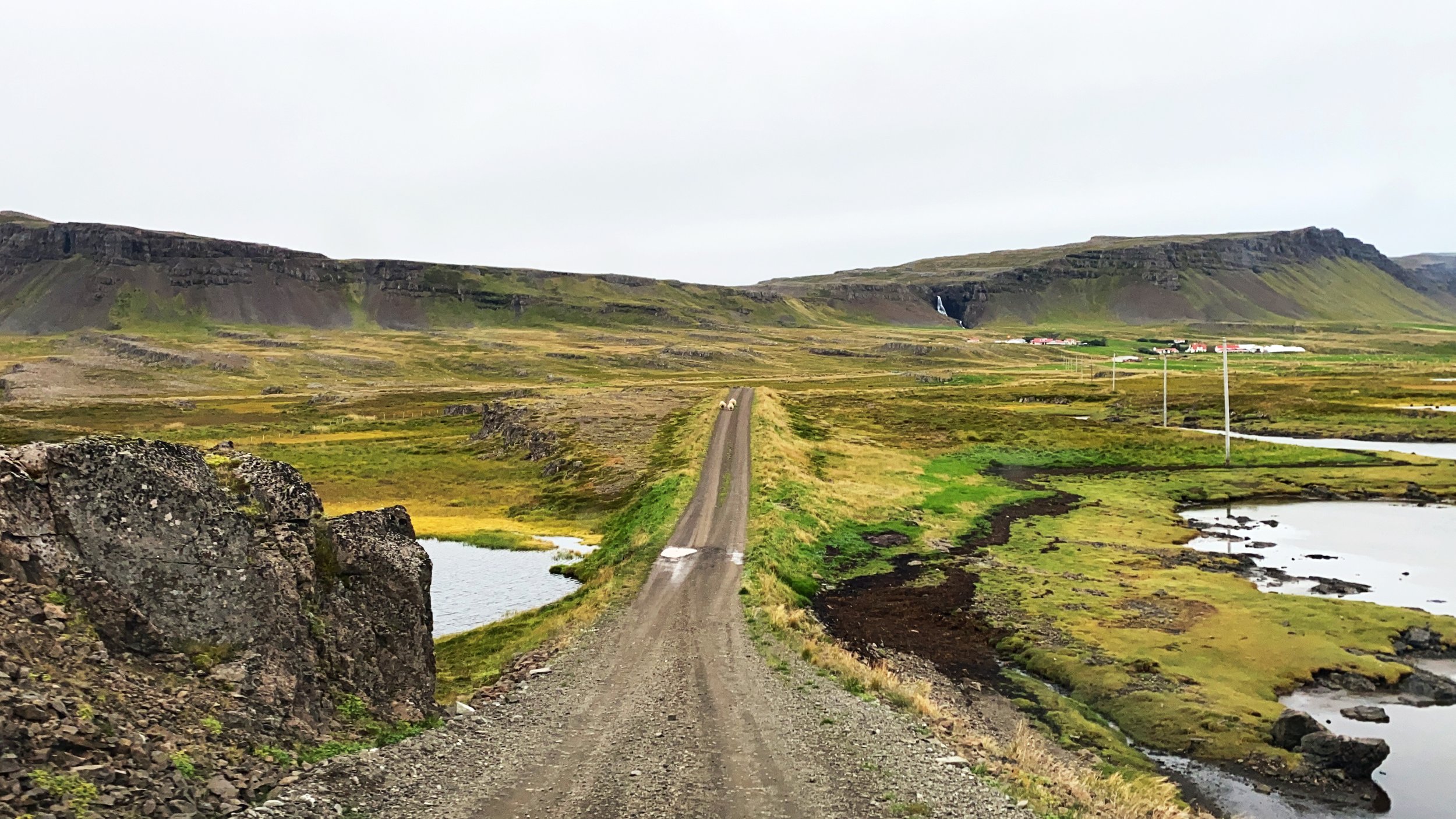
Image above: The road to one of the shores where Dalli harvests seaweed.
Article creditsInterview - Dagrún Ósk Jónsdóttir Videography - Haukur Sigurðsson, Margeir Haraldsson and Jamie Lee Photography - Haukur Sigurðsson and Jamie Lee Article - Jamie Lee Art direction - Jamie Lee Design - Lena Marczyñska Transcription - Guðbjörg Lárusdóttir
Follow us on Facebook.

